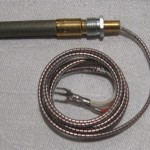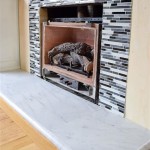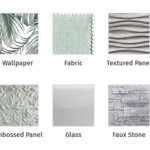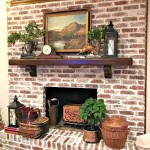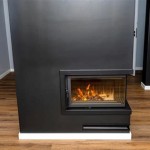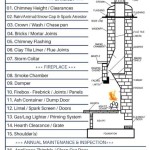Fireplaces Staten Island: A Comprehensive Guide to Selection, Installation, and Maintenance
Fireplaces have long been a focal point in homes, providing warmth, ambiance, and a sense of comfort. For residents of Staten Island, choosing the right fireplace involves considering several factors, including fuel type, design aesthetics, energy efficiency, and local building codes. This article explores the various aspects of fireplaces available on Staten Island, offering guidance on selecting, installing, and maintaining these essential home features.
Understanding Fireplace Types
The first step in choosing a fireplace is understanding the different types available. Each type offers unique benefits and drawbacks with regard to fuel source, installation requirements, and overall cost. Common fireplace types include wood-burning, gas, electric, and ethanol fireplaces.
Wood-burning fireplaces evoke a traditional and rustic charm, offering the unmistakable scent and crackle of burning wood. These fireplaces require a chimney for proper ventilation and are subject to local regulations regarding emissions and wood storage. Wood-burning fireplaces can be inefficient, with a significant portion of the heat escaping through the chimney. However, modern wood-burning inserts and stoves can improve efficiency and reduce emissions.
Gas fireplaces provide a convenient and efficient alternative to wood-burning fireplaces. They operate on natural gas or propane and can be easily turned on and off with a switch or remote control. Gas fireplaces are typically more energy-efficient than wood-burning fireplaces and produce fewer emissions. They also offer a consistent heat output and require minimal maintenance. Installation involves connecting the fireplace to a gas line and ensuring proper venting.
Electric fireplaces offer a simple and versatile heating solution. They do not require a chimney or venting system and can be easily installed in most rooms. Electric fireplaces use electricity to generate heat and typically feature realistic flame effects. They are energy-efficient and provide supplemental heating. However, they may not provide the same level of heat as wood-burning or gas fireplaces. Electric fireplaces are often chosen for their ease of installation and aesthetic appeal.
Ethanol fireplaces are a relatively new option, offering a clean-burning and ventless alternative. These fireplaces use liquid ethanol fuel, which produces a real flame without requiring a chimney or flue. Ethanol fireplaces are available in various designs, including freestanding models, wall-mounted units, and tabletop options. They are environmentally friendly and do not produce smoke, soot, or ash. However, ethanol fireplaces may not provide the same level of heat as other types and require regular refueling.
Selecting the Right Fireplace for Your Home
Choosing the right fireplace involves assessing your heating needs, aesthetic preferences, and budget. Consider the size of the room you intend to heat and the frequency with which you plan to use the fireplace. If you are primarily looking for supplemental heating, an electric or gas fireplace may be sufficient. If you desire the ambiance and warmth of a traditional fire, a wood-burning fireplace or gas fireplace with realistic logs may be a better choice.
Consider the design of your home when selecting a fireplace. Fireplaces can be integrated into existing walls or installed as freestanding units. Choose a style that complements your home's decor, whether it's traditional, contemporary, or modern. Fireplace surrounds are available in various materials, including brick, stone, wood, and metal. These surrounds can enhance the aesthetic appeal of the fireplace and create a focal point in the room.
Budget is another important consideration. The cost of a fireplace can vary significantly depending on the type, size, and features. Wood-burning fireplaces often require a more substantial initial investment due to chimney construction or upgrades. Gas fireplaces typically have lower installation costs but require a connection to a gas line. Electric fireplaces are generally the most affordable option, with simple installation requirements. Factor in ongoing costs such as fuel, maintenance, and repairs when budgeting for a fireplace.
Before making a final decision, research different brands and models and read customer reviews. Consult with a qualified fireplace installer to ensure that the fireplace meets local building codes and safety standards. A professional installer can also provide guidance on proper venting, gas line connections, and electrical wiring.
Fireplace Installation Considerations on Staten Island
Fireplace installation on Staten Island is subject to local building codes and regulations. Obtain the necessary permits before beginning any installation work. These permits ensure that the fireplace meets safety standards and is properly installed. Contact the Staten Island Department of Buildings for information on permit requirements and inspection procedures.
Proper venting is crucial for wood-burning and gas fireplaces. Wood-burning fireplaces require a chimney that is properly sized and constructed to ensure adequate draft and prevent the buildup of creosote. Gas fireplaces require a venting system that is compatible with the type of gas used (natural gas or propane). Consult with a qualified technician to determine the appropriate venting system for your fireplace.
Gas line connections must be performed by a licensed plumber or gas fitter. Ensure that the gas line is properly sized and installed according to code. Leak tests should be conducted to verify the integrity of the gas line. Incorrect gas line connections can pose a serious safety hazard.
Electrical wiring for electric fireplaces should be performed by a licensed electrician. Ensure that the electrical circuit is properly grounded and that the wiring is sufficient to handle the fireplace's power requirements. Overloaded circuits can cause electrical fires. Electric fireplaces require a dedicated circuit to function safely and efficiently.
Consider the location of the fireplace. Ensure that the fireplace is installed away from flammable materials such as curtains, furniture, and rugs. Maintain adequate clearance around the fireplace to prevent overheating and fire hazards. Follow the manufacturer's instructions for recommended clearances.
Maintaining Your Fireplace for Optimal Performance and Safety
Regular maintenance is essential for ensuring the safe and efficient operation of your fireplace. Proper maintenance can extend the lifespan of your fireplace and prevent costly repairs. Maintenance tasks vary depending on the type of fireplace.
For wood-burning fireplaces, regular chimney sweeping is crucial for removing creosote buildup. Creosote is a flammable substance that can accumulate in the chimney and cause chimney fires. Schedule a professional chimney sweep at least once a year, or more frequently if you use the fireplace regularly. Inspect the chimney for cracks, loose bricks, or other damage. Repair any damage promptly to prevent water leaks and structural problems.
For gas fireplaces, inspect the burners and logs regularly. Clean the burners with a soft brush to remove dust and debris. Replace any damaged or worn-out logs. Check the pilot light and thermocouple to ensure they are functioning properly. Schedule a professional inspection and cleaning every year to ensure the fireplace is operating safely and efficiently.
For electric fireplaces, clean the unit with a soft cloth to remove dust and fingerprints. Check the heating element and fan to ensure they are functioning properly. Replace any damaged or worn-out parts. Inspect the electrical cord and plug for damage. Do not overload the electrical circuit.
For ethanol fireplaces, clean the burner with a soft cloth. Use only approved ethanol fuel. Do not overfill the burner. Ensure adequate ventilation in the room when operating the fireplace. Store ethanol fuel in a safe and secure location away from heat and open flames.
Regardless of the type of fireplace, install and maintain smoke detectors and carbon monoxide detectors in your home. Test these detectors regularly to ensure they are functioning properly. Replace the batteries at least once a year. Carbon monoxide is a colorless, odorless gas that can be produced by fireplaces. Early detection is crucial for preventing carbon monoxide poisoning.
Energy Efficiency and Cost Savings
Choosing an energy-efficient fireplace can help reduce your heating costs and minimize your environmental impact. Fireplace efficiency is measured by its heating efficiency rating, which indicates the percentage of heat produced that is actually used to heat the room. Higher heating efficiency ratings indicate more efficient fireplaces.
Wood-burning fireplaces can be made more efficient by installing a fireplace insert or stove. These inserts and stoves are designed to capture and circulate more heat into the room. Ensure that the fireplace door is closed when the fireplace is not in use to prevent heat from escaping through the chimney.
Gas fireplaces are typically more energy-efficient than wood-burning fireplaces. Choose a gas fireplace with a high heating efficiency rating and a programmable thermostat. Use the thermostat to regulate the heat output and prevent overheating. Consider a direct-vent gas fireplace, which draws combustion air from outside and vents exhaust gases directly outdoors. This type of fireplace is more energy-efficient and safer than a natural-vent gas fireplace.
Electric fireplaces are energy-efficient because they convert almost all of the electricity they use into heat. Choose an electric fireplace with an adjustable thermostat and a timer. Use these features to control the heat output and prevent wasting energy. Turn off the fireplace when it is not in use.
Consider using a zone heating strategy to maximize energy efficiency. Use the fireplace to heat the rooms you are using most often, rather than heating the entire house. This can help reduce your overall heating costs.

Gallery Ember Fireplaces Of Central Gas Wood Indoor Outdoor

Chimney And Fireplace Masonry Concrete Contractor In Staten Island Ny

Installation Nyc Fireplaces Outdoor Kitchens

Top 10 Best Fireplace Remodel In Staten Island Ny September 2024 Yelp

Installation Nyc Fireplaces Outdoor Kitchens
Custom Fireplace Woodworking Portfolio Staten Island Ny Tds Woodcrafts Inc

Gallery Ember Fireplaces Of Central Gas Wood Indoor Outdoor

Installation Nyc Fireplaces Outdoor Kitchens

Custom Fireplace Woodworking Portfolio Staten Island Ny Tds Woodcrafts Inc

Give Your Fireplace A Facelift Gables New York Staten Island Ny
Related Posts

